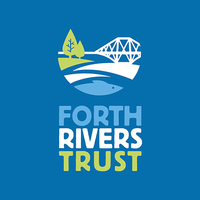


Local Sponsors
-
The Forth Rivers Trust
The Clubhouse, 106 Biggar Road, Edinburgh. EH10 7DU
The Trust provides a voice for rivers at a national, regional and local scale whilst promoting sustainable catchment management of rivers in the Forth system. They promote and protect river ecosystems, engage with local communities and provide robust Scientific evidence to inform policy and target restoration projects.” The current description is more in line with the remit of the Fishery Board.
-
Forever After Memorials
Bridge of Allan
We are specialists in memorial supply and renovation and installation, we have years of experience reviving, adding inscriptions and refixing headstones. New Memorials - Added Inscriptions - Memorial Restoration and re-lettered - Erecting and Re-erecting.
More information
Many thanks to Robert Alexander for facilitating this camera's location and to The Forth Rivers Trust for capitally funding its installation. The Allan Water originates from the Ochil Hills and flows through Strathallan, Dunblane, and Bridge of Allan before joining the River Forth. The river has the potential to cause floods in the lower part of Bridge of Allan. Within Bridge of Allan, three significant weirs still exist. The upper weir previously supplied Airthrey Mills, while the middle weir collected the outfall from Airthrey Mills and the main river flow. The lower weir, along with the middle and lower weirs, supplied various mills and factories until the 1950s. Although the area is now occupied by housing, remnants of the mill-related water channels are still visible, and the water cascading over the weirs remains impressive.The "Allan Water" is referenced in two broadside ballads. One is a Scottish ballad that describes the river as wide and deep, while the other, a more well-known English ballad, begins with "On the banks of Allan Water." The English ballad narrates the story of a miller's daughter who tragically loses her soldier lover to infidelity. This particular version gained popularity through C. E. Horn's comic opera, Rich and Poor (1812), and was sung by Bathsheba Everdene during the sheepshearing supper in Thomas Hardy's novel Far From The Madding Crowd (1874). In 2008, Italian singer Ariella Uliano recorded a similar rendition of the ballad with church organ accompaniment.During the Iron Age, the local inhabitants of the region were known as the Maeatae, who constructed a formidable hillfort nearby. The early village consisted of seven small settlements: Bridge End, Kierfield, Old Lecropt, Pathfoot, Logie, Corntown, and the Milne of Airthrey. These villages were distinct entities, and their residents lived within the confines of their own communities.The present-day area of Bridge of Allan extends from the Logie settlement across the Allan Water to the University of Stirling. Its first mention can be found in a charter granted by King David I. This charter was issued in relation to a dispute between the nuns of North Berwick and the monks at Dunfermline Abbey over the tithes of Airthrey and Corntown. Although the exact date of the charter is unknown, it was granted before 1146.In 1520, a narrow stone bridge, resembling a hog's back, was constructed to replace the old ford across the River Allan. The bridge had a steep rise from the riverbank and a similarly sharp descent on the other side. Soon after its construction, a few cottages began to appear around the bridge, and the foundations of Bridge of Allan slowly took shape. In the nearby woods, a mine was opened around 1550, extracting quantities of copper, silver, and gold.By the mid-17th century, the ownership of the Airthrey Estate had passed to the Grahams, relatives of the Marquess of Montrose. During the Wars of the Three Kingdoms, James Graham, aligned with the king, rose to prominence. In 1645, as the army of the Duke of Argyll marched through the Airthrey estate en route to the Battle of Kilsyth, they burned down the manor house.In 1745, during the Jacobite uprising, Bridge of Allan witnessed the presence of three hundred Highlanders who established a roadblock on the bridge, charging a toll for passage. One of the original toll posts can still be seen on a path leading up from Henderson Street.In the early 19th century, the town remained underdeveloped, characterized by small cottages with straw roofs. In 1850, Major Alexander Henderson, the Laird of Westerton, created plans for the layout of the village, envisioning spacious streets and wooded pleasure grounds. He also erected a fountain on Market Street. At this time, many elegant stone villas were constructed along wide thoroughfares, and every other house became a lodging house, establishing Bridge of Allan as a renowned spa town. Notably, Robert Louis Stevenson was a regular visitor during his youth.In 1870, Bridge of Allan became an independent Police Burgh with its own Provost. That same year, Laurence and Edmund Pullar relocated to Bridge of Allan to establish the expansive Keirfield Works in the southwest part of the town. This large factory served as a significant satellite for their father's firm, J. Pullar & Son, later known as "Pullars of Perth." The Bridge of Allan plant catered to central and southern Scotland, while the Perth location served the north. The Pullars also developed extensive housing schemes from the 1880s onward to accommodate the growing workforce. Additionally, they purchased Westerton House from Major Henderson for use as their residence.In 1887, the Museum Hall, originally known as the Macfarlane Museum and Art Gallery, was built by the trustees of JohnMacfarlane of Coneyhill. While initially intended as a venue for exhibitions, it was later utilized as a concert hall and even hosted the Beatles in 1963. However, over time, it fell into disuse and disrepair. Recently, the building has undergone redevelopment and transformation into residential units.


